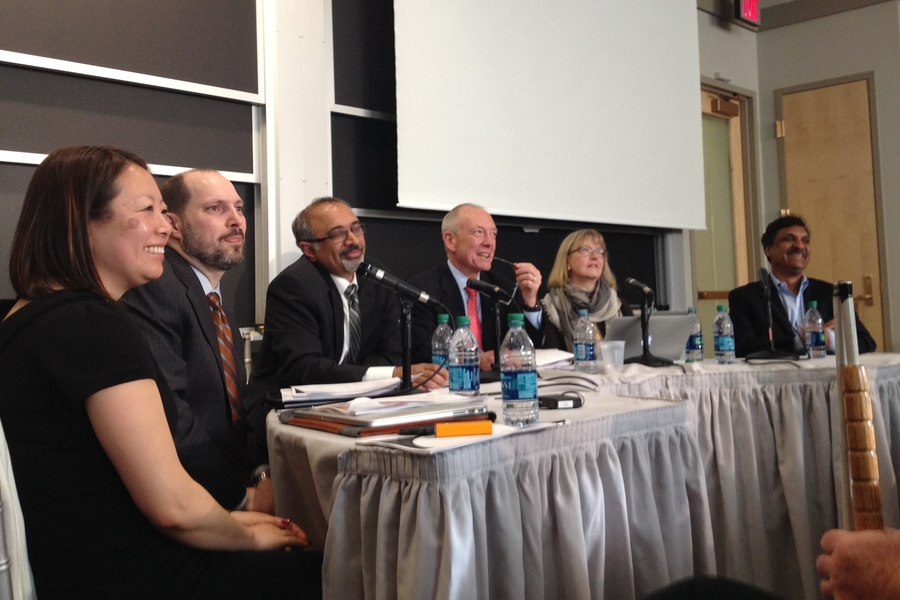The average higher education student of today is no longer an 18-year old undergraduate student who receives a bachelor’s degree in four years to move into the workforce. Seventy four percent of today’s undergraduates have at least one non-traditional characteristic: They are transfers, adults with dependents, full- or part-time workers, minorities, or first-generation university attendees. And the greatest need for higher education is among vulnerable groups such as 24-year-old single mothers and 50-year-old displaced workers.
In order to better serve this rapidly evolving ecosystem, the Office of Educational Technology (OET) at the U.S. Department of Education launched on Jan. 12 a supplement to the 2016 National Educational Technology Plan (NETP): “Reimagining the Role of Technology in Higher Education.” This is the first time the NETP includes a focus on higher ed.
Three representatives from the Department of Education visited MIT on the day of the report’s publication: Ted Mitchell, under secretary of education; Joseph South, director of OET; and Sharon Leu, senior policy advisor and key author of the report. Their presentation was succeeded by a panel discussion with Sanjay Sarma, MIT’s vice president for open learning; Barbara Means, director of the Center for Technology in Learning at SRI International; and Anant Agarwal, MIT professor and CEO of edX.
With the launch of this supplement, the OET hopes to foster a collaborative university ecosystem for sharing new ideas. The focus of the report is student-centered. OET views technology as most useful for improving equity, access, and affordability. The report thus challenges educators, researchers, and policy makers working with technology to ask if it is helping students, especially those with non-traditional characteristics. It also facilitates fluid transitions for students between different colleges and into the workforce.
Crucially, the report asserts that learning does not end upon the completion of a four-year degree. In order to expand the limited view of the learning cycle, the OET presents design principles to guide students of all ages towards the right form of education considering their background and needs, as well as assist students after graduation. The report highlights several university systems that have already implemented successful practices. For example, the University of Maryland University College provides open educational resources that save undergraduate students $17 million a year by eliminating textbook costs.
“There is a misconception that innovation in universities only happens in the labs,” says Sharon Leu. “This report sheds light on the breadth and depth of innovation going on in teaching and learning in higher ed.”
Although the Higher Education Supplement to the NETP is only a few days old, the original K-12 NETP, published in 2016, has had tremendous impact on the U.S. school systems. It showed that technology could have its greatest impact when focused on equity and access. The supplement extends this idea to higher education to create a student-centered higher education ecosystem.
“This supplement will help leadership at universities take the steps necessary to meet the needs of the new higher-ed student universe,” says Sanjay Sarma, who collaborated with the OET to develop this supplement.
In order for the supplement to be successful, Mitchell encouraged the audience to believe in the power of technology and to engage legislators and policy makers in this process. And Agarwal, a member of the Technical Working Group of the report, invited the audience to embrace innovation and disruption of increasingly outmoded methods in education. "Higher education needs to remain at the cutting-edge of research and new learning technologies. The principles outlined in the NETP have captured how we can design a better future for all students, everywhere."







